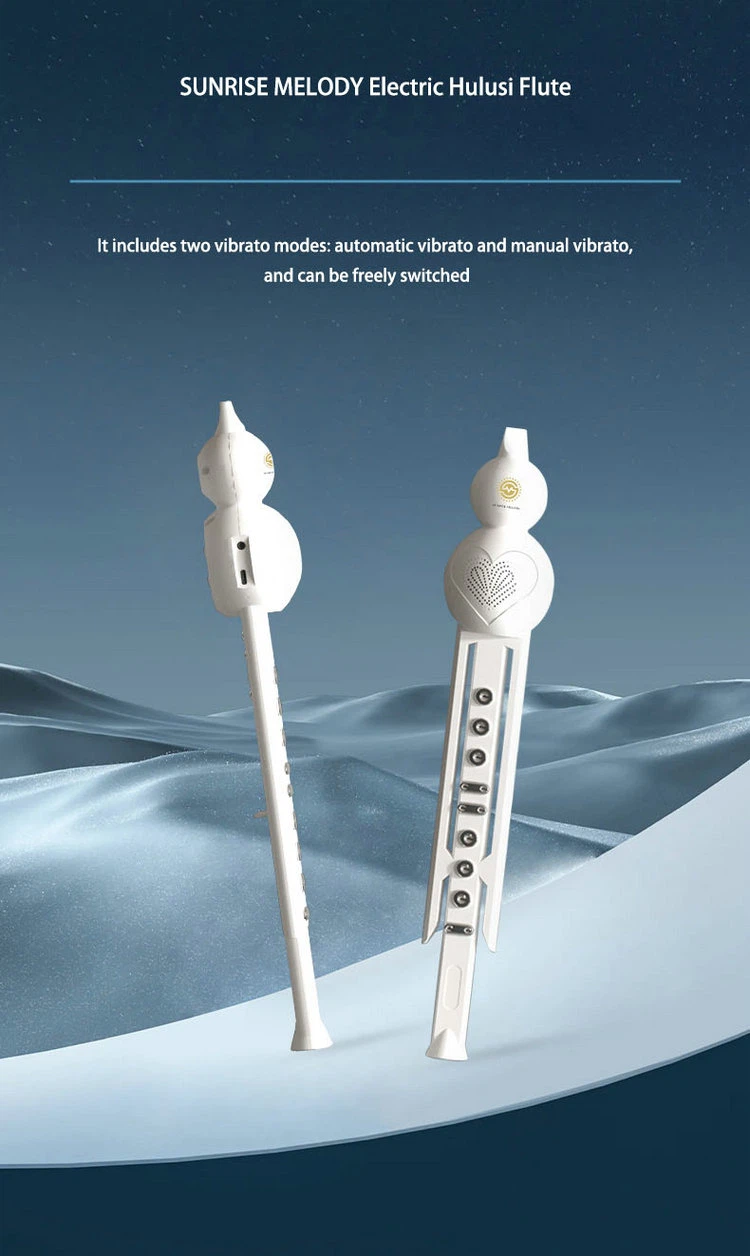The calabash flute, with its unique charm and tonal qualities, offers great flexibility in terms of how it can be presented musically. It can be played both as a solitary instrument, standing alone to convey a rich tapestry of emotions and sounds, or it can seamlessly blend and interact with other instruments to create harmonious and diverse musical ensembles.
When played alone, the calabash flute has the remarkable ability to command attention and create a captivating musical experience. Its gentle and mellow tones can fill a space with a sense of tranquility and introspection. A solo calabash flute performance allows the musician to showcase their individual artistry and interpretation. They can manipulate the breath control, finger placements, and vibrato to add depth and nuance to the music. For instance, a slow and soulful solo might imitate the gentle flow of a river, with each note representing a ripple on the water's surface. The musician can use variations in tempo and dynamics to build tension and release, taking the listener on an emotional journey.
Let's consider a specific example of a solo calabash flute piece that aims to evoke a sense of longing and nostalgia. The musician might start with soft, sustained notes, gradually increasing the intensity and complexity of the playing. They could incorporate trills and bends to add a touch of melancholy and yearning. The absence of other instruments allows the calabash flute's sound to resonate clearly, highlighting its inherent beauty and the musician's mastery over the instrument.
On the other hand, the calabash flute also shines when combined with other instruments. Its distinct timbre can add a special flavor to an ensemble, creating a rich and multi-layered sonic landscape. When paired with string instruments like the erhu or the guzheng, the calabash flute can complement their tones and add a contrasting element. The erhu's passionate and expressive voice might interact with the calabash flute's more laid-back and smooth sound, creating a dynamic conversation between the two. For example, in a traditional folk ensemble, the calabash flute could provide a steady rhythmic foundation while the erhu takes the lead with soaring melodic lines.
In a combination with wind instruments such as the dizi or the xiao, the calabash flute can blend in seamlessly, creating a unified and harmonious wind section. The different breathing techniques and tonal characteristics of these instruments can combine to produce a complex and enchanting sound. Picture a performance where the dizi's clear and piercing tones interweave with the calabash flute's warmer and more rounded sounds, creating a beautiful sonic texture.
When combined with percussion instruments, the calabash flute adds a melodic element to the rhythmic foundation. The beats of drums or cymbals can provide a driving force while the calabash flute weaves a melodic thread through the rhythm. This combination can be seen in many festive or energetic musical settings, where the combination of rhythm and melody creates an infectious and lively atmosphere.
Furthermore, in a modern or experimental music setting, the calabash flute can interact with electronic instruments or synthesizers. Its organic sound can contrast with the synthetic tones, creating a unique and contemporary sonic experience. For instance, the calabash flute's live performance could be processed and modulated through electronic effects, adding a new dimension to the sound and opening up creative possibilities.
To sum up, the calabash flute's versatility allows it to thrive both in solitary performances that showcase its individual charm and in collaborative settings where it contributes to the collective musical expression. Whether standing alone or joining forces with other instruments, the calabash flute has the power to touch the hearts of listeners and leave a lasting impression.
SUNRISE MELODY Electric calabash flute instrument
Chinese calabash flute instrument it has a unique ethnic style and is extremely ethnic.
And it has a good volume and 10 timbres, it is easy to learn and simple to use, especially suitable for beginners.
6 Major Core Selling Points, a variety of innovative functions to meet different performance needs:
10 kinds of timbres
Touchable octave
Connect headphones
Four fingerings
Built-in battery
Built-in speakers



